The electric SUV segment is heating up with two powerful contenders: the Audi Q6 e-tron and the Polestar 4. Both vehicles embody the transition towards sustainable mobility, yet they offer different approaches to performance, technology, and design. This article will compare the technical aspects and innovations of these exciting models, helping potential buyers make an informed choice.
Audi Q6 e-tron vs Polestar 4 – Which one offers the better deal?
Two cars, one duel: Audi Q6 e-tron meets Polestar 4.
Which one wins in performance, efficiency and value for money? Find out now!
Powertrain and Performance
The Audi Q6 e-tron comes equipped with a range of powerful electric motors, offering configurations with power outputs ranging from 292 to an exhilarating 516 HP, depending on the model variant. This translates to impressive acceleration figures, with the quickest versions capable of sprinting from 0 to 100 km/h in just 4.3 seconds. The Q6 e-tron is available in both rear-wheel drive and all-wheel drive configurations, providing flexibility according to the driver's needs.
On the other hand, the Polestar 4 takes performance to a new level with a top variant that delivers an impressive 544 HP. With an acceleration of 0 to 100 km/h in just 3.8 seconds, the Polestar 4 is designed for those who crave instant power and agility. It, too, features all-wheel drive and rear-wheel drive setups, appealing to a diverse range of driving preferences.
Efficiency and Range
When it comes to electric range and efficiency, both vehicles hold their own. The Audi Q6 e-tron boasts a remarkable range of up to 637 km, depending on the battery configuration and driving style. Its battery capacities range from 75.8 kWh to 94.9 kWh, providing efficiency ratings around 15.6 to 18.9 kWh/100km.
The Polestar 4 also impresses with its range of up to 620 km, leveraging a 94 kWh battery. Its energy consumption rates approximate 17.8 to 18.7 kWh/100km. While the Q6 e-tron edges out in terms of maximum range, the Polestar 4 delivers solid efficiency that aligns with its performance-oriented attitude.
Dimensions and Practicality
In terms of size, the Audi Q6 e-tron measures 4771 mm in length, while the Polestar 4 is slightly longer at 4840 mm. Despite the size difference, both models offer ample trunk capacity, with the Q6 e-tron providing up to 526 liters and the Polestar 4 matching that capacity. With five seats available in both vehicles, families and drivers alike can enjoy generous space and comfort.
However, the Q6 e-tron stands taller at 1685 mm compared to the Polestar 4’s height of 1534 mm, potentially offering a more commanding driving position and better visibility on the road.
Technological Innovations
Both Audi and Polestar pack their vehicles with cutting-edge technology and innovative features. The Q6 e-tron showcases Audi's latest MMI infotainment system, which delivers seamless connectivity and an intuitive user interface. The integration of advanced driver-assistance systems enhances safety and convenience, making each drive both enjoyable and secure.
The Polestar 4, on the other hand, emphasizes a minimalist yet high-tech interior, featuring a large central touchscreen that runs on Google’s Android Automotive OS. This integration not only simplifies navigation and media controls but also allows for easy access to Google Assistant, Google Maps, and a wide range of apps directly through the vehicle’s interface.
Conclusion: Choosing Your Electric SUV
In summary, the Audi Q6 e-tron and Polestar 4 are impressive additions to the electric SUV market, each catering to different customer needs. The Q6 e-tron excels in providing a superior range and a luxurious driving experience, while the Polestar 4 focuses on performance and innovative digital technology.
Ultimately, the choice between these two electric SUVs will depend on your personal preferences in terms of performance, technology, and practicality. Both vehicles are paving the way for a sustainable future in automotive design, offering drivers the opportunity to embrace electric mobility without compromising on performance or comfort.
Here’s where it gets real: The technical differences in detail
Costs and Efficiency:
Price and efficiency are often the first things buyers look at. Here it becomes clear which model has the long-term edge – whether at the pump, the plug, or in purchase price.
Polestar 4 has a slight advantage in terms of price – it starts at 53100 £, while the Audi Q6 e-tron costs 54400 £. That’s a price difference of around 1371 £.
In terms of energy consumption, the advantage goes to the Audi Q6 e-tron: with 15.60 kWh per 100 km, it’s somewhat more efficient than the Polestar 4 with 17.80 kWh. That’s a difference of about 2.20 kWh.
As for range, the Audi Q6 e-tron performs minimal better – achieving up to 656 km, about 36 km more than the Polestar 4.
Engine and Performance:
Under the bonnet, it becomes clear which model is tuned for sportiness and which one takes the lead when you hit the accelerator.
When it comes to engine power, the Polestar 4 has a slight edge – offering 544 HP compared to 516 HP. That’s roughly 28 HP more horsepower.
In acceleration from 0 to 100 km/h, the Polestar 4 is slightly quicker – completing the sprint in 3.80 s, while the Audi Q6 e-tron takes 4.30 s. That’s about 0.50 s faster.
In terms of top speed, the Audi Q6 e-tron performs a bit better – reaching 230 km/h, while the Polestar 4 tops out at 200 km/h. The difference is around 30 km/h.
There’s also a difference in torque: Audi Q6 e-tron pulls slightly stronger with 855 Nm compared to 686 Nm. That’s about 169 Nm difference.
Space and Everyday Use:
Beyond pure performance, interior space and usability matter most in daily life. This is where you see which car is more practical and versatile.
Both vehicles offer seating for 5 people.
In curb weight, Audi Q6 e-tron is hardly perceptible lighter – 2200 kg compared to 2230 kg. The difference is around 30 kg.
Boot capacity is identical – both offer 526 L of storage.
In maximum load capacity, the Polestar 4 performs minimal better – up to 1536 L, which is about 7 L more than the Audi Q6 e-tron.
When it comes to payload, Audi Q6 e-tron a bit takes the win – 540 kg compared to 455 kg. That’s a difference of about 85 kg.
Who wins the race?
The Audi Q6 e-tron proves to be offers a more balanced package and therefore becomes our DriveDuel Champion!
Audi Q6 e-tron is the better all-rounder in this comparison.
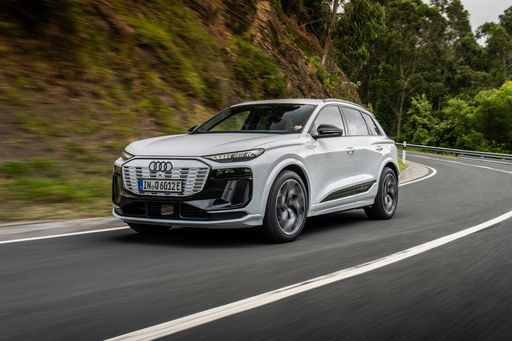 @ Audi AG
@ Audi AG
Audi Q6 e-tron
Audi Q6 e-tron
The Audi Q6 e-tron represents a significant step forward in the realm of electric vehicles, offering a perfect blend of cutting-edge technology and timeless design. With its spacious interior and advanced infotainment system, it provides both comfort and connectivity for the modern driver. The Q6 e-tron embodies Audi's commitment to sustainability without compromising on performance or luxury.
details @ Audi AG
@ Audi AG
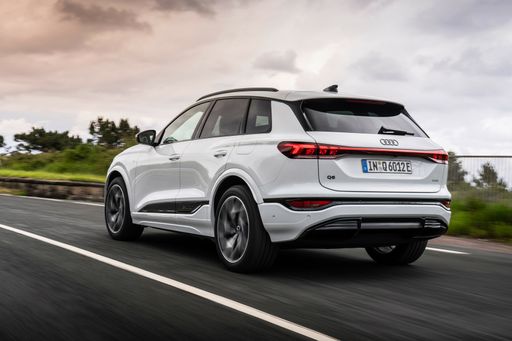 @ Audi AG
@ Audi AG
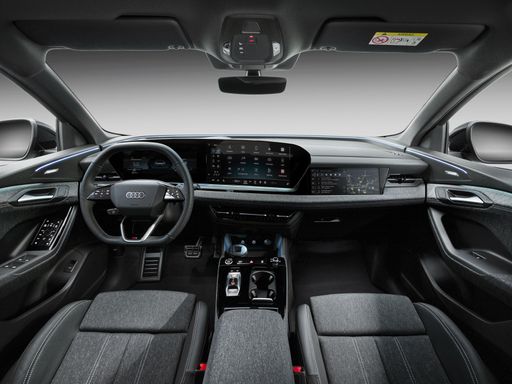 @ Audi AG
@ Audi AG
Polestar 4
The Polestar 4 embodies a seamless blend of cutting-edge technology and sophisticated design, establishing itself as a prominent contender in the modern electric vehicle market. Its elegant exterior lines are complemented by an interior that prioritises both luxury and sustainability, offering a serene driving experience. With its focus on innovation, the Polestar 4 continues to push the boundaries of performance, setting a new standard for what an electric car can achieve.
details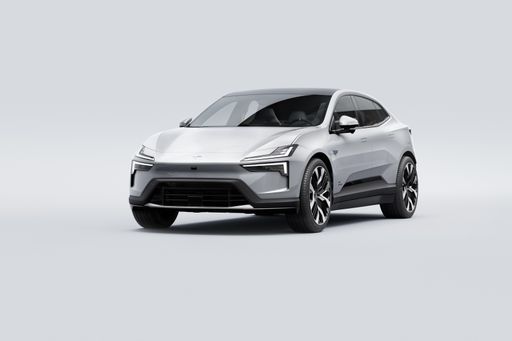 @ Polestar Automotive Holding
@ Polestar Automotive Holding
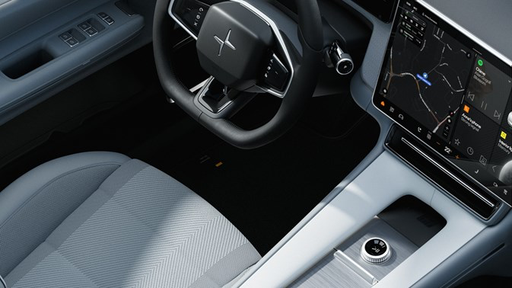 @ Polestar Automotive Holding
@ Polestar Automotive Holding
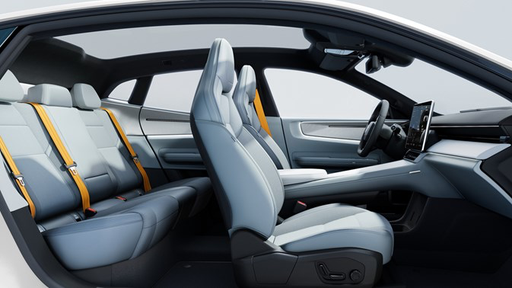 @ Polestar Automotive Holding
@ Polestar Automotive Holding
 @ Audi AG
@ Audi AG
|
 @ Polestar Automotive Holding
@ Polestar Automotive Holding
|
|
|
|
Costs and Consumption |
|
|---|---|
|
Price
54400 - 91900 £
|
Price
53100 - 59900 £
|
|
Consumption L/100km
-
|
Consumption L/100km
-
|
|
Consumption kWh/100km
15.6 - 18.9 kWh
|
Consumption kWh/100km
17.8 - 18.7 kWh
|
|
Electric Range
482 - 656 km
|
Electric Range
590 - 620 km
|
|
Battery Capacity
75.8 - 94.9 kWh
|
Battery Capacity
94 kWh
|
|
co2
0 g/km
|
co2
0 g/km
|
|
Fuel tank capacity
-
|
Fuel tank capacity
-
|
Dimensions and Body |
|
|---|---|
|
Body Type
SUV
|
Body Type
SUV
|
|
Seats
5
|
Seats
5
|
|
Doors
5
|
Doors
5
|
|
Curb weight
2200 - 2425 kg
|
Curb weight
2230 - 2355 kg
|
|
Trunk capacity
499 - 526 L
|
Trunk capacity
526 L
|
|
Length
4771 mm
|
Length
4840 mm
|
|
Width
1939 - 1965 mm
|
Width
2008 mm
|
|
Height
1665 - 1685 mm
|
Height
1534 mm
|
|
Max trunk capacity
1361 - 1529 L
|
Max trunk capacity
1536 L
|
|
Payload
540 kg
|
Payload
455 kg
|
Engine and Performance |
|
|---|---|
|
Engine Type
Electric
|
Engine Type
Electric
|
|
Transmission
Automatic
|
Transmission
Automatic
|
|
Transmission Detail
Reduction Gearbox
|
Transmission Detail
Reduction Gearbox
|
|
Drive Type
Rear-Wheel Drive, All-Wheel Drive
|
Drive Type
All-Wheel Drive, Rear-Wheel Drive
|
|
Power HP
252 - 516 HP
|
Power HP
272 - 544 HP
|
|
Acceleration 0-100km/h
4.3 - 7.6 s
|
Acceleration 0-100km/h
3.8 - 7.1 s
|
|
Max Speed
210 - 230 km/h
|
Max Speed
200 km/h
|
|
Torque
450 - 855 Nm
|
Torque
343 - 686 Nm
|
|
Number of Cylinders
-
|
Number of Cylinders
-
|
|
Power kW
185 - 380 kW
|
Power kW
200 - 400 kW
|
|
Engine capacity
-
|
Engine capacity
-
|
General |
|
|---|---|
|
Model Year
2024 - 2025
|
Model Year
2024
|
|
CO2 Efficiency Class
A
|
CO2 Efficiency Class
A
|
|
Brand
Audi
|
Brand
Polestar
|
What drivetrain options does the Audi Q6 e-tron have?
Available configurations include Rear-Wheel Drive or All-Wheel Drive.
The prices and data displayed are estimates based on German list prices and may vary by country. This information is not legally binding.
